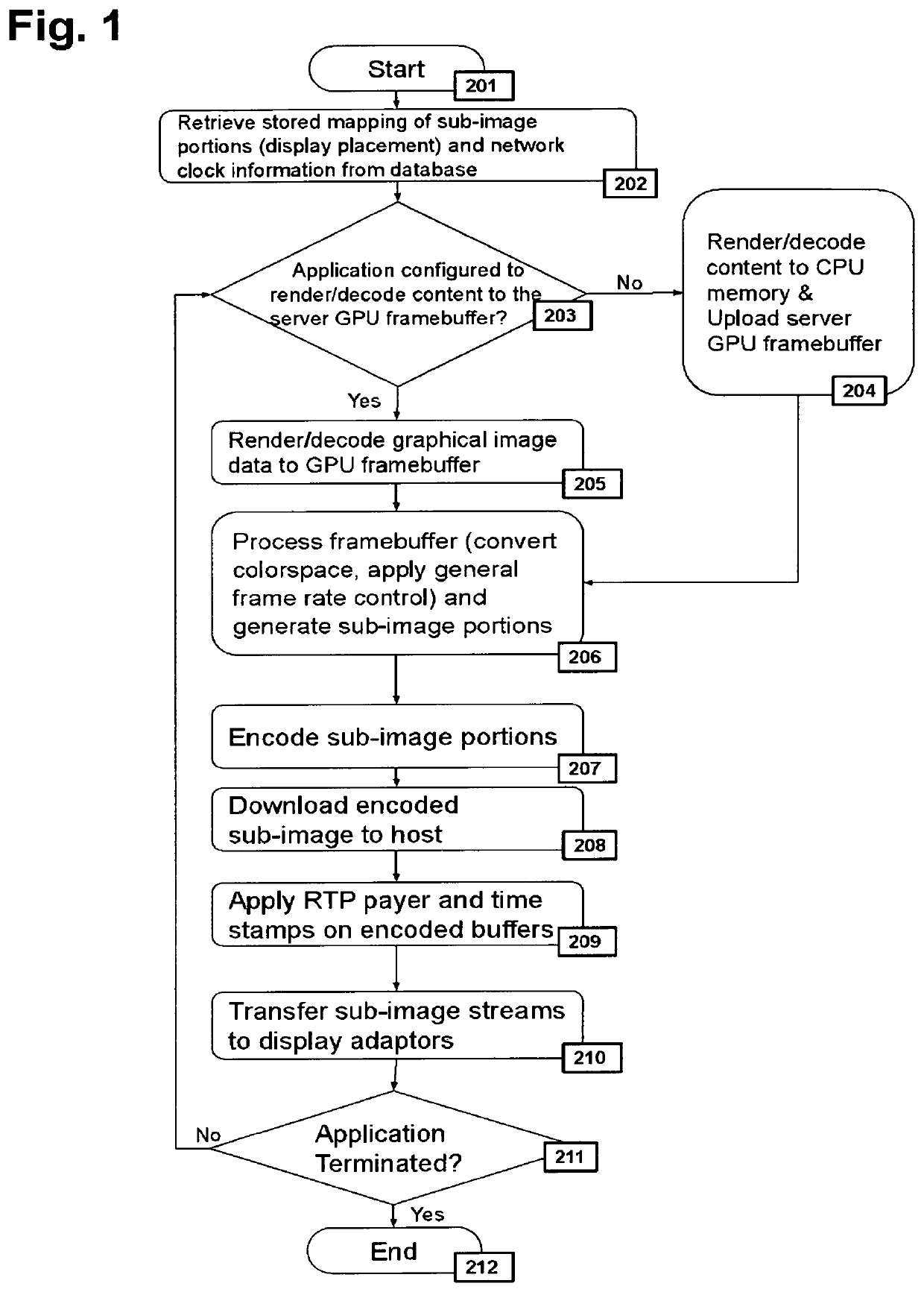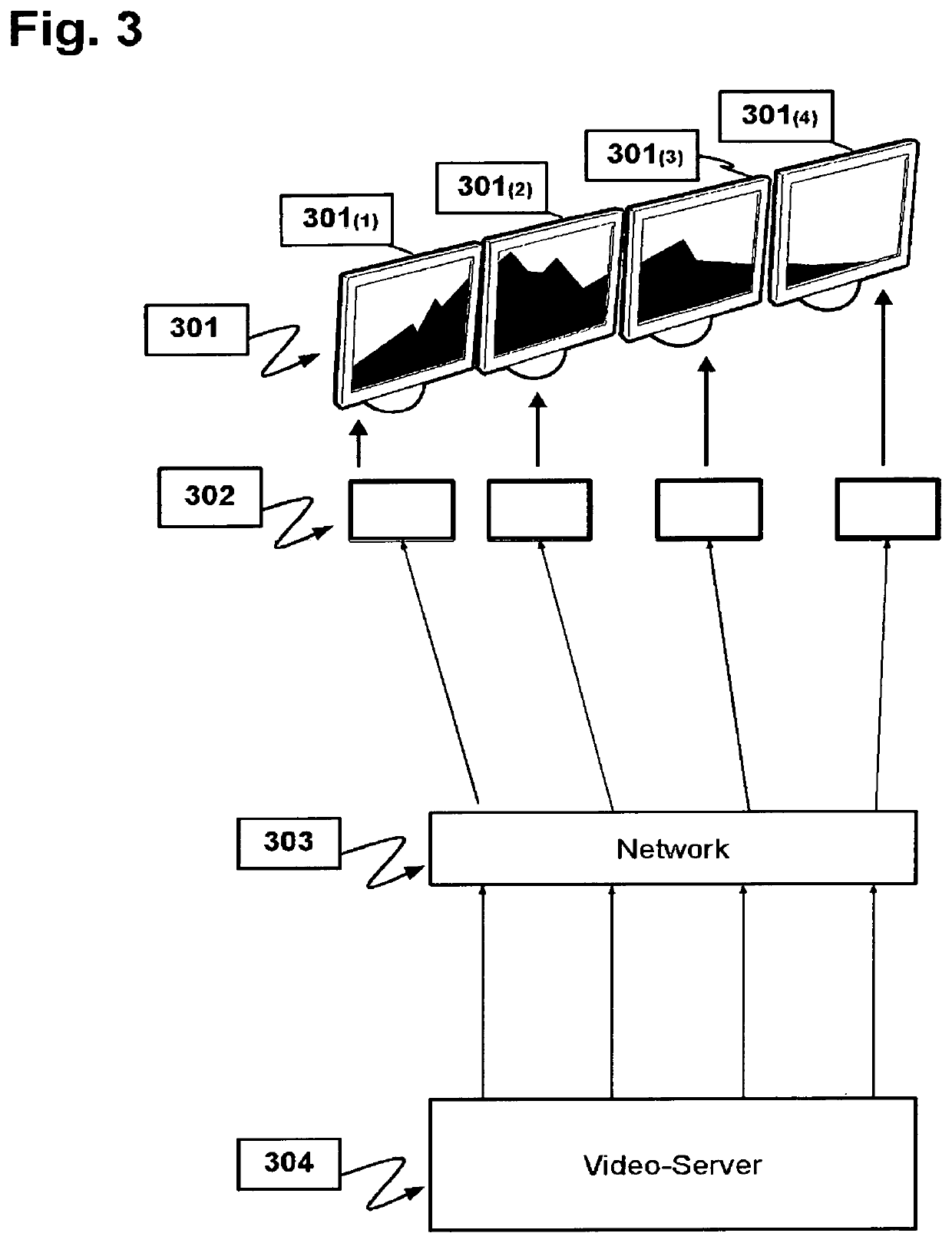System and method for synchronized streaming of a video-wall
a video-wall and video-wall technology, applied in the field of video-wall synchronization system and method, can solve the problems of increasing communication costs, increasing the cost of individual display adapters, and dealing with real-time conten
- Summary
- Abstract
- Description
- Claims
- Application Information
AI Technical Summary
Benefits of technology
Problems solved by technology
Method used
Image
Examples
Embodiment Construction
[0037]This networked video-wall invention efficiently splits the sequence of frames of a video source on-the-fly and distributes the resulting streams of compressed video sub-frames over the network to multiple listening display devices where the corresponding sub-frames of an original frame are all displayed in synchrony. The splitting is achieved by built-in algorithms that decode, parse, process, and re-encode each input frame into multiple sub-images for transmission and display. There is no theoretical limit on the size of the video-wall, and each display can be independently positioned and oriented (i.e. rotated) within the video-wall.
[0038]Because only the relevant portions of the image are being sent to each display, and each of the video streams are encoded for network transmission, the network bandwidth consumed can be minimized and the ultimate resolution of the video-wall is not constrained by network bandwidth or SOC resolution limitations.
[0039]The present disclosure d...
PUM
 Login to View More
Login to View More Abstract
Description
Claims
Application Information
 Login to View More
Login to View More - R&D
- Intellectual Property
- Life Sciences
- Materials
- Tech Scout
- Unparalleled Data Quality
- Higher Quality Content
- 60% Fewer Hallucinations
Browse by: Latest US Patents, China's latest patents, Technical Efficacy Thesaurus, Application Domain, Technology Topic, Popular Technical Reports.
© 2025 PatSnap. All rights reserved.Legal|Privacy policy|Modern Slavery Act Transparency Statement|Sitemap|About US| Contact US: help@patsnap.com



